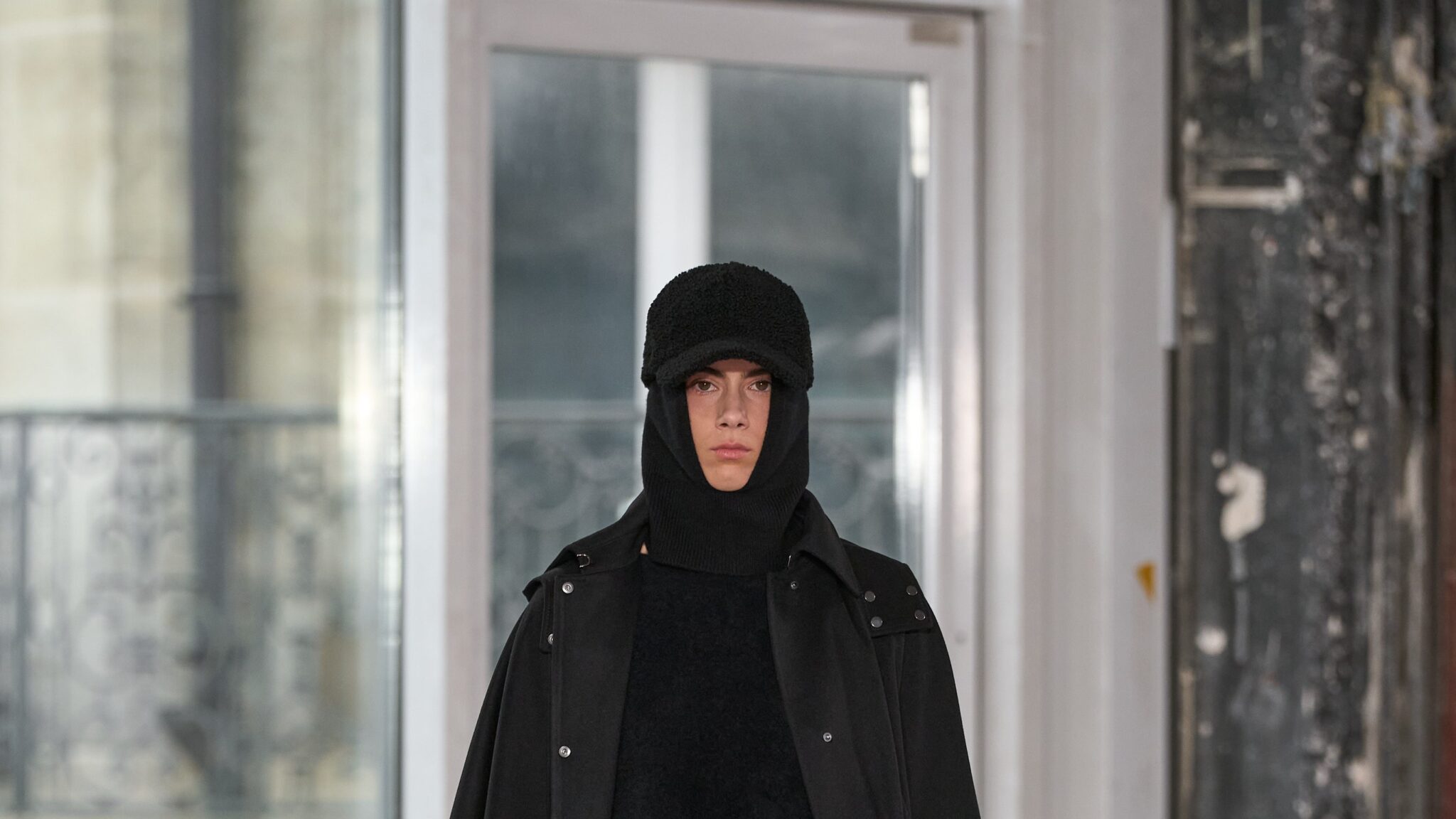Before the Akris show started, Albert Kriemler walked the racks backstage, pulling individual looks and offering them up for inspection. Kriemler’s clothes are subtle compared to much of what we see on the catwalks in Paris, and their nuance is best appreciated up close. Even better if you can hold them in your hands.
Today he talked about the many different types of cashmere: pebble cashmere, cashmere silk rib, cloud cashmere (not mohair or alpaca, he emphasized, but pure brushed cashmere), silk-lined cashmere, cashmere jersey, loop cashmere. Although the show notes did not specify this, it seems likely that the baseball hats that several models wore were also cashmere. You get the picture; these clothes and accessories feel wonderful, like a warm embrace.
Texture was one of the key draws of the collection, whether it was the sheer micro-stripe embroidery of an almost weightless cape, the ‘double’ sequins that changed from black to silver and back again with the wave of a hand on a form-fitting dress, or the lacquered lace of a floor-length dress that caught the light as it slid down the catwalk. Another attraction was the functionality of the clothing. Kriemler pointed out a double face coat that separated into a long cardigan and a short jacket (a nod to the unpredictable weather) and maxi skirts that were actually long-leg trousers, and thus a bit more practical.
Among Kriemler’s last but not least important details were the digital prints he made from the analogue photograms of Swiss artist Katalin Deér, which he discovered at a recent art fair in Basel. Deér does not use a camera or negatives to achieve her effects, but light-sensitive paper, colored light and glass tubes. Kriemler used the prints for weightless kaftans in silk georgette as well as long and short coats in sturdier fabrics such as double-sided wool and wool gabardine. The results were more graphic and abstract than some of his more literal interpretations of his favorite works of art. These would ensure that you get noticed in a room.





